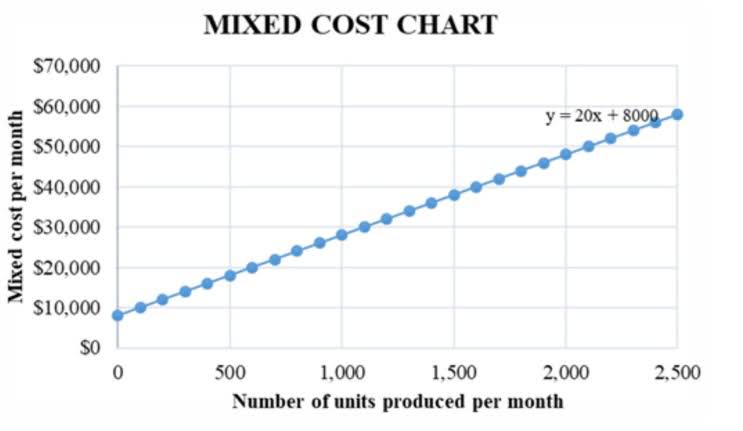
A balance sheet is a crucial financial statement that provides a snapshot of a company’s financial position at a specific point in time. It displays the company’s assets, liabilities, and shareholder equity, allowing stakeholders to understand the company’s financial health and performance. To gain a comprehensive understanding of construction in progress balance sheet, it is crucial to demystify this concept. In this section, we will provide an overview of the construction in progress accounting process and shed light on how it is reported in financial statements. By the end of this section, readers will have a clear understanding of the construction in progress balance sheet and its implications.

Transitioning CIP to a Fixed Asset Account
At that time the company removes the construction in progress account from the balance sheet, replacing it with a regular long-term asset account. Typically, companies that utilize construction financing to build a property obtain permanent financing that replaces the construction loan. Conducting monthly or quarterly reviews allows for the identification of discrepancies and ensures that all costs are being recorded accurately. These reviews should involve cross-functional teams, including project managers, accountants, and procurement officers, to provide a comprehensive overview of the project’s financial health. Utilizing tools like Microsoft Power BI or Tableau can enhance these reviews by offering visual analytics and dashboards that make data easier to interpret.
What are the journal entries involved in construction in progress accounting?
- The construction-in-progress asset account captures all costs related to the project, including labor, materials, and equipment.
- Companies can monitor spending and budgets using CIP accounts and adequately report their financial health.
- Capitalized costs include materials, labor, interest and other costs to ready the asset for use.
- For example, Planyard automatically updates budgets as costs are recorded, ensuring real-time accuracy without the need for redundant data entry.
- It helps evaluate the capital expenditure, profitability, and overall financial health of the business.
- Determining when to begin depreciation for construction in progress is critical for accurate financial reporting.
- It plays a critical role in ensuring financial transparency and enabling construction companies to make informed business decisions.
Construction financial statements include various financial reports, such as balance sheets, income statements, and cash flow statements. The CFO is responsible for accurately reporting the company’s financial position, performance, and cash flow, enabling effective financial planning and forecasting. Recognizing construction expenses is an essential aspect of construction in progress accounting. It involves identifying and allocating costs to specific construction projects or phases accurately. Revenue recognition is the process of recording and reporting revenue in financial statements.
Understanding Construction in Progress Accounting
Tools like Procore, Sage 300 Construction and Real Estate, and Viewpoint Vista Bookkeeping for Chiropractors offer robust features tailored to the unique needs of construction projects. These platforms provide real-time data, enabling project managers to monitor expenditures closely and make timely adjustments as needed. Financial management is crucial in mitigating the challenges of large-scale construction projects. Construction companies must adopt robust systems and processes to ensure efficient tracking of expenses, income, and cash flow. Effective project cost control and budget management play a pivotal role in the success of these endeavors.
Financial Management: Overview and Role and Responsibilities
This classification can affect the company’s free cash flow, a critical metric for assessing financial flexibility and the ability to fund future projects or return capital to shareholders. Monitoring these cash flows is essential for maintaining liquidity and ensuring that the company can meet its short-term obligations while investing in long-term growth. The Financial Accounting Standards Board (FASB) defines Construction in Progress (CIP) as the cost of construction work being undertaken on a long-term asset that is not yet ready for its intended use.
- Despite not being completed or operational, it’s recorded within the PP&E section, encompassing long-term assets used to generate revenue over multiple periods.
- Conducting monthly or quarterly reviews allows for the identification of discrepancies and ensures that all costs are being recorded accurately.
- CIP is recorded as an asset on the balance sheet, reflecting the investment in ongoing projects.
- Construction financial statements include various financial reports, such as balance sheets, income statements, and cash flow statements.
- Recording costs with debits and credits follows the fundamental principles of double-entry bookkeeping.
Everything You Need To Know About Construction In Progress (CIP) Accounting

For a construction firm that makes a contract to sell fixed assets, the objective is the same. All the costs of assets under construction are recorded in the ‘Construction cip accounting In Progress Ledger Account.’ They are shifted to the asset side of the balance sheet from the ledger. Financing costs range from interest payments made during the construction period to closing costs, lender fees and recording fees. The CIP balance also includes land acquisition costs and legal fees directly tied to purchasing the property or negotiating construction and related agreements.

What is the role of a Chief Financial Officer (CFO) in construction accounting?
The CFO plays a crucial role in managing construction financial statements and ensuring accurate accounting practices. They are responsible for overseeing the financial management of construction projects, avoiding accounting errors, and providing expert financial advice. With a clear understanding of construction in progress accounting, companies can streamline their financial management, improve their budget planning, and ultimately enhance their overall construction projects. By optimizing the use of construction in progress balance sheets, organizations can maximize their asset management and ensure the successful completion of construction projects.
Summary of CIP Accounting
- A higher asset base can make a company appear more robust, but it also necessitates careful management to ensure that these assets eventually translate into revenue.
- We hope you can apply the above information about CIP accounting to your accounting process.
- Because the expansion is complete and in service, the equipment in this example will begin depreciating as other fixed asset accounts do.
- On the balance sheet, the construction in progress account is typically presented under the “fixed assets” category.
- This gives you a firsthand look at how we can support your financial goals and enhance your business operations.
- One thing to understand is that only capital costs related to an asset under construction are to be kept in the CIP account.
- Tracking CIP provides deep visibility into project performance, ensures accurate financial reporting, and facilitates operational decisions.
This distinction makes CIP a crucial accounting tool for industries like construction, where large-scale projects require meticulous financial oversight. According to the matching principle of accounting of accrual accounting, the expenses related to certain revenues must be recorded in the same period when they were incurred. Construction companies keep their construction-in-progress accounts open for longer than needed to keep their assets value high and misrepresent profits. Given this, construction companies should delegate their finances to experts, to teams like Monily with the capacity and knowledge to manage multiple balance sheets simultaneously.
Progress Vs. Process
As the project progresses, these costs are gradually transferred to fixed asset accounts. Construction projects involve substantial investments and complex financial transactions. Accurate accounting allows companies to monitor cash flow project costs in real-time, identify potential issues, and take corrective actions promptly.